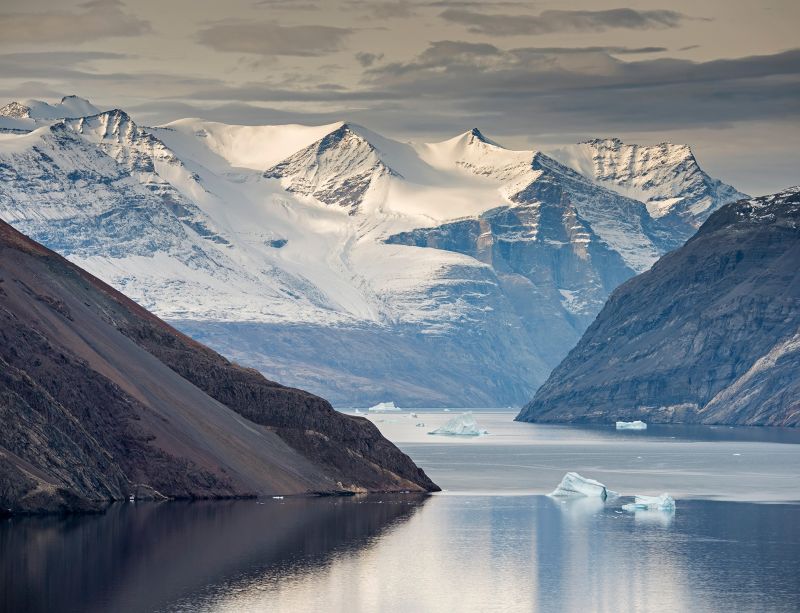National parks are really into big things, especially super-large landmarks.
Sagarmatha National Park in Nepal safeguards the southern slopes of Mt Everest, the world’s highest peak at 8,849 meters (29,032 feet).
Venezuela’s Canaima National Park is home to Angel Falls, the world’s tallest waterfall at 979 meters (3,212 feet).
Sprawling across 400 square kilometers (154 square miles), Angkor Archaeological Park in Cambodia boasts the globe’s largest religious monument and largest ancient ruined metropolis.
But the largest thing about national parks may be their colossal size.
Larger than Delaware and roughly the same size as Wales, Yellowstone was considered huge when it became the world’s first national park in 1872.
However, an explosion of new protected areas in the late 20th and early 21st centuries put the older generation of national parks to shame when it comes to size. Some of the newbies are more than 50 times bigger than Yellowstone.
Here’s a look at the largest parks on each continent.
North America
Sprawling across nearly half of the world’s largest island, Northeast Greenland National Park is currently the globe’s single largest national park and biggest land-based protected area.
It’s hard to wrap your brain around its sheer size – 972,000 square kilometers (375,000 square miles) – which makes it larger than all but 29 of the United Nations’ member states.
The vast Greenland Ice Sheet comprises most of the park, but there’s also a long, rugged coastline that’s home to musk oxen, polar bears and many other Arctic creatures.
The best way to reach the park from Ittoqqortoormiit, the nearest town, “is by boat during the summer, in the winter by dogsled with our local hunters,” says Mette Pike Barselajsen of Nanu Travel, which offers guided trips to East Greenland.
South America
South America’s largest parks are found in the continent’s least-populated regions – the Amazon and Patagonia.
The reigning champ is Chiribiquete National Park in southeast Colombia (43,000 square kilometers/17,000 square miles). Protecting a massive tract of Amazon rainforest, tepui flat-topped mountains and wild rivers, the park looks like something out of “Jurassic Park” rather than a modern landscape.
There may not be dinosaurs, but the place is inhabited by other apex predators.
Called the “Maloca (Longhouse) of the Jaguar” by the local indigenous people, Chiribiquete flaunts a wide range of flora and fauna, as well as more than 75,000 ancient rock paintings, some of them rendered more than 24,000 years ago.
Colombia Oculta offers flightseeing trips over Chiribiquete’s truly “lost world.”
Australia
Australia’s largest nature reserve is also brand new. Covering 36,000 square kilometers/13,900 miles, the Munga-Thirri-Simpson Desert National Park was declared in 2021 to protect the starkly beautiful desert landscapes of far northern South Australia.
It includes one of the world’s largest dune fields, acacia woodlands, spinifex grasslands, gypsum outcrops and playa (dry) lake chains. As well as more than 150 bird species, the park provides an arid habitat for small marsupials (many of them nocturnal), dingoes, feral camels and the perentie (Australia’s largest lizard).
Currently, the park has no visitor facilities and no paved roads; anyone who ventures into the Simpson Desert on their own should be well-versed in wilderness survival. Outback Spirit Adventures offers 14-day guided tours in Mercedes Benz G Wagons. Due to extreme heat, the park is closed during the antipodean summer.
Asia
Despite being the largest continent, Asia has fallen behind in the race for the world’s largest national parks.
Established in 2021, China’s Sanjiangyuan National Park is now the largest (123,100 square kilometers/47,529 square miles), a colossal chunk of the Tibetan Plateau that nurtures the headwaters of the Yangtze, Yellow and Lantsang rivers.
Rugged and remote, the highlands harbor a range of rare, endangered or vulnerable animal species, from snow leopards and Himalayan wolves to the wild yak and Alpine musk deer. The park also includes cultural sites.
Elevated Trips offers guided journeys through Qinghai Province that include forays into the Sanjiangyuan region.
Europe
Given its small size compared to many other continents, many of Europe’s largest parks seem puny compared to the others. But that doesn’t mean they’re actually small.
Far and away the largest is Iceland’s Vatnajökull National Park (14,141 square kilometers/5,460 square miles). The reserve personifies the island’s “fire and ice” ethos, a wonderland of volcanoes and hot springs, fjords and glaciers that’s easy to explore on your own (camping, hiking and birdwatching) or via guided trips.
Africa
Some of the world’s highest and biggest sand dunes are the centerpiece of western Namibia’s Namib Naukluft National Park, Africa’s largest at 49,768 square kilometers (19,216 square miles).
The dunes – some of them more than 200 meters (656 feet) high – were created by millennia of waves and onshore winds depositing sand on the world’s oldest desert.
Easy to explore with your own vehicle, the main park road leads to the vibrant Sossusvlei dunes and photogenic Dead Vlei with its ghostly forest. Hot-air balloon flights offer a bird’s-eye-view of the awesome desertscape.
In addition to its legendary dunes, Namib Naukluft is renowned for its desert canyons, shipwrecked spangled seacoast, as well as flora and fauna that have adapted to one of the Earth’s most arid places.
Although it’s not a national park per se, Africa’s largest protected zone is the Kavango-Zambezi Transfrontier Conservation Area (520,000 square kilometers/200,000 square miles) formed in 2012 to safeguard adjoining parts of Zambia, Zimbabwe, Mozambique, Angola and Namibia.
Antarctica
The bottom end of the planet doesn’t boast any national parks yet, but the Antarctic’s only official nature reserve is the Ross Sea Marine Protected Area.
Created in 2016, the reserve spans 1.55 million square kilometers (600,000 square miles) and is home to millions of polar animals including penguins, whales, seals and seabirds.
Yet, at some point in the future, the entire continent could become the Antarctic World Park. At 14.2 million sq km (5.5 million square miles), that would make it around 10 times larger than any other reserve.
“During the 1980s, NGOs (nongovernment organizations) promoted the idea that Antarctica should be designated a world park,” says Claire Christian, executive director of the Antarctic & Southern Ocean Coalition. “But this didn’t occur.”
Instead, the Antarctic Treaty nations signed a new international agreement called the Protocol on Environmental Protection that prohibits mining and established rules to minimize the environmental impact of tourism and scientific research activities in Antarctica.






